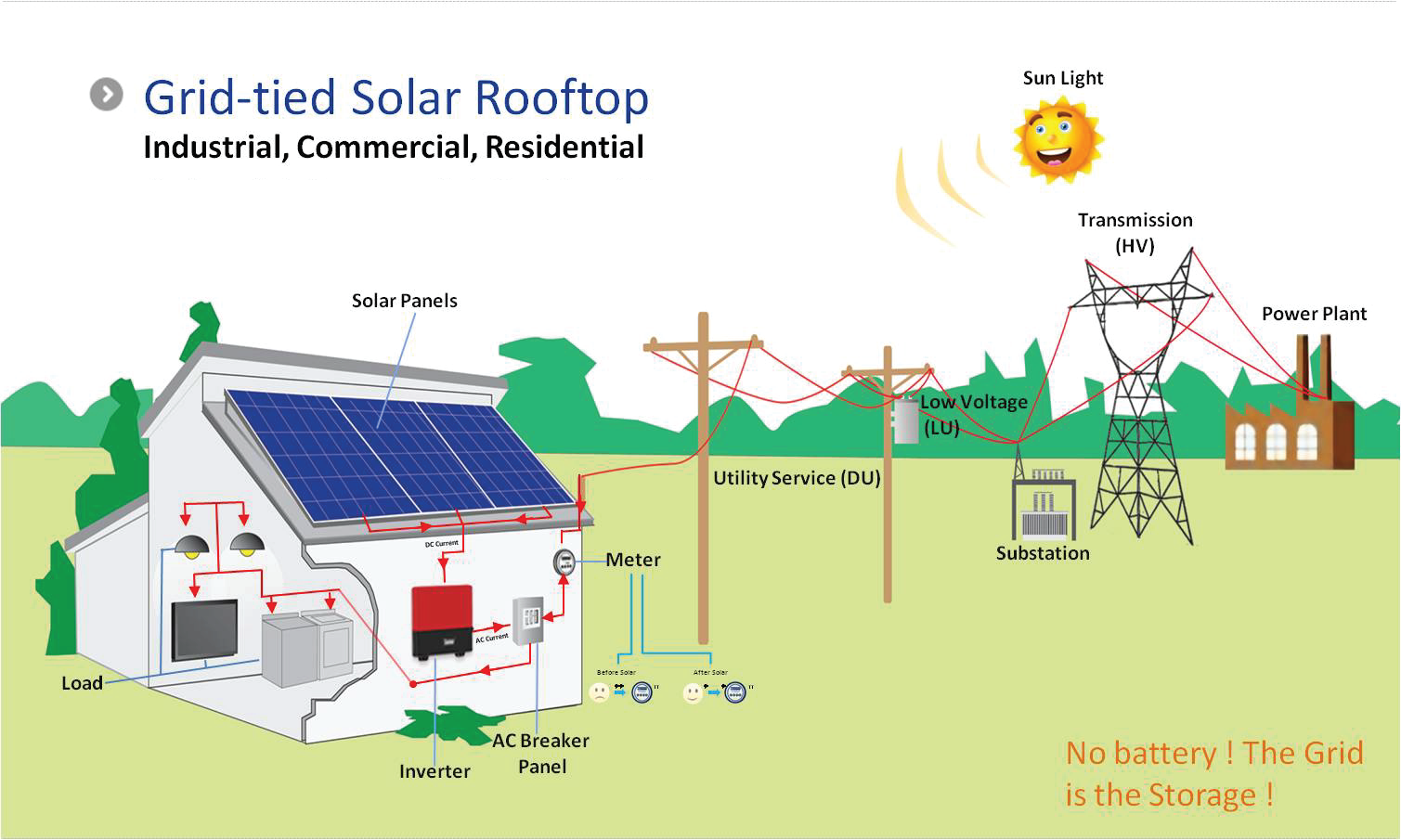
An on-grid solar system, also known as a grid-tied solar system, is a solar power system that is connected to the main electrical grid. This type of system uses solar panels to generate electricity from sunlight and sends any excess power back to the grid, often in exchange for credits or payments from the utility company. In an on-grid solar system, when the solar panels produce more electricity than is being used in the building, the excess power is sent back to the electrical grid through a bi-directional meter. Other customers on the grid can then use this excess power, and the owner of the solar system may receive a credit on their electricity bill or a payment from the utility company ( According to SREDA , Owner can put 70 % Solar Plant (AC) of sanction load to enjoy energy export facilities as per net metering facility-2018 .
To get a free assessment , visit http://www.sreda.gov.bd/site/page/e007ec01-e189-4130-9275-6765c93090cb/Net-Metering-Calculator).
When the solar panels are not producing enough electricity, the system draws power from the grid as usual. This allows the building to have a continuous supply of electricity, even when solar production is low, and ensures that excess solar power is not wasted. Nowadays, On-grid solar systems are popular in areas with established electrical grids, where customers can take advantage of net metering policies to reduce their electricity bills and support the transition to clean energy. There are some points mentioned below There are some points mentioned below that outline the key features of the on-grid solar power plant.
©2023.Eaibd. All Rights Reserved.